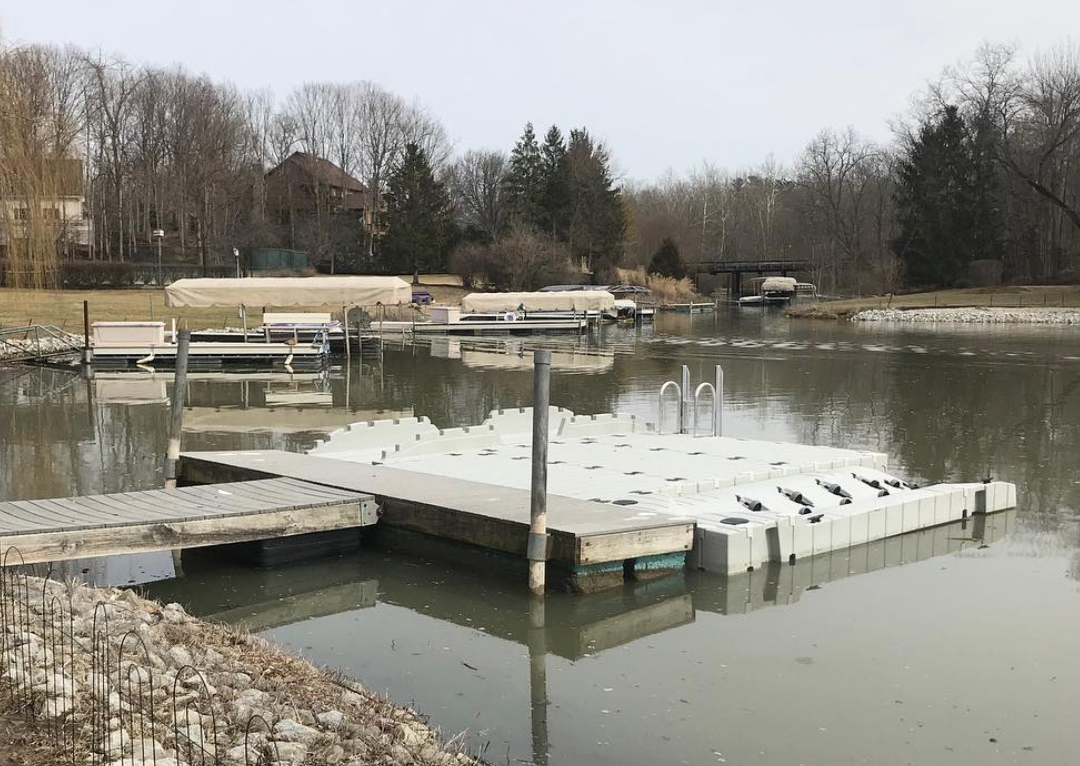How to Address Common Dock Fixing Issues for Safe Water Tasks

Identifying Common Dock Issues
Recognizing typical dock problems is vital for keeping the performance and security of your beachfront residential or commercial property. Regular examinations can assist uncover troubles before they become serious, making sure both the durability of the dock and the security of those that utilize it.
An additional usual problem is the degradation of flotation protection gadgets. These gadgets are crucial for maintaining the dock resilient, and any kind of damages or punctures can trigger the dock to checklist or sink. Consistently looking for leaks or water logged drifts can preempt more substantial concerns.
Additionally, algae and barnacle build-up on the dock's surface area can produce hazardous and unsafe problems. This biofouling not only presents a risk to customers but can additionally speed up the deterioration of the dock products.
Last but not least, checking for signs of rust on metal elements is necessary. Corrosion can endanger the integrity of the dock's structure, making it hazardous. By consistently identifying these usual dock problems, you can make sure that your dock continues to be functional and protected for many years ahead.
Repairing Rotting Wood
When resolving the concern of deteriorating wood on your dock, it is important to act quickly to stop more deterioration. Begin by completely checking the whole framework to identify all impacted areas. Make use of a screwdriver to penetrate the timber; if it sinks in conveniently, the timber is most likely rotted and needs immediate interest.
Be sure to reduce back to healthy and balanced, solid wood, ensuring you remove all endangered product. After elimination, deal with the staying timber with a wood chemical to stop future rot.
Next, change the eliminated sections with marine-grade lumber or pressure-treated timber, which are extra immune to water damage. Secure the brand-new pieces with stainless-steel or galvanized bolts to avoid rust. Additionally, using a waterproof sealer to the new timber can give an added layer of protection.
Securing Loosened Boards
Exactly how do you ensure your dock stays useful and secure for all its customers? One vital aspect is securing loosened boards, which can or else pose considerable hazards. Loosened boards not only enhance the danger of tripping but can likewise jeopardize the architectural honesty of the entire dock.

For reinstallation, utilize galvanized or stainless steel screws, as these materials provide exceptional resistance to corrosion in aquatic atmospheres. Make certain the screws are long sufficient to penetrate deep right into the underlying support structure, but not as long that they extend through the dock's surface area. Pre-drilling pilot holes can aid stop the timber from splitting.
Lastly, keep a routine evaluation schedule to determine and resolve any type of new concerns without delay. By securing loosened boards successfully, you add to the total safety and security and longevity of your dock, making it a dependable platform for water tasks.
Maintaining Unstable Pilings
Making certain the security of unstable pilings is paramount to keeping a useful and safe dock. Use a level to inspect for upright positioning and guarantee they are driven deep enough into the substrate to offer ample assistance.
If the pilings are located to be unstable, one effective method for support is making use of extra bracing. Cross-bracing with treated lumber or galvanized steel can dramatically boost security. Support the dental braces safely to both the pilings and the dock structure to disperse lots uniformly.

Regular maintenance and routine reassessment of the pilings' security are crucial to making sure long-term dock safety and security and performance.
Replacing Rusty Hardware
Addressing unstable pilings is just one facet of preserving a dock's stability; an additional important issue is changing rustic hardware. Gradually, exposure to wetness and salt can cause the oxidation and rust of screws, braces, and screws, jeopardizing the whole framework's safety. Normal inspection for corrosion is vital, particularly after serious weather or seasonal changes.
When rustic equipment is identified, instant action is called for. Begin by selecting marine-grade stainless steel or galvanized equipment, both made to resist the extreme aquatic setting. Ensure that you have the proper tools, such as wrenches and screwdrivers, to safely remove the old, rusty items without causing further damages to the dock.
After eliminating the rustic equipment, extensively clean the affected areas to eliminate any type of recurring rust or particles. Use a rust-inhibiting guide to exposed metal surface areas before setting up the new equipment. Tighten all components firmly to stop future loosening, and regularly examine the installations to make certain recurring security.
Replacing rustic equipment not only prolongs the dock's life expectancy yet also substantially boosts the safety and security of water activities. By proactively handling rust, you safeguard both the structure and its individuals, making certain a delightful and safe and secure waterfront experience.
Conclusion
Routine evaluations and upkeep are important to attend to typical dock repair service problems and make certain safe water tasks. By recognizing and correcting troubles such as rotting wood, loosened boards, unsteady pilings, and rusty equipment, architectural stability and longevity can be significantly improved. The application of suitable therapies and marine-grade products additionally fortifies the dock versus environmental stressors. Such positive measures add to the general safety and functionality of dock frameworks, promoting a internet protected setting for water-based tasks.
Making sure the safety of water tasks hinges significantly on the correct upkeep Click Here and repair work of anchors (Dock Repairs). These devices are crucial for maintaining the dock buoyant, and any type of damages or slits can trigger the dock to list or sink. By routinely determining these typical dock issues, you can make sure that your dock continues to be secure and practical for years to come
Ensuring the stability of unsteady pilings is vital to maintaining a functional and secure dock.Normal inspections and maintenance are necessary to deal with usual dock repair issues and guarantee safe water activities.